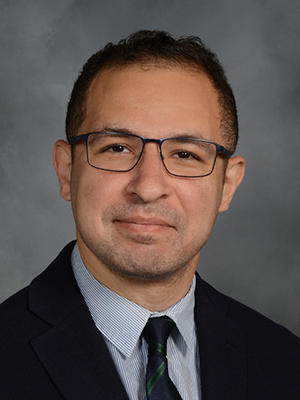Dr. Mohammed A. Fouda, Fellow in Pediatric Neurosurgery and Neurosurgical Innovations at Weill Cornell Medicine, has been awarded a second year of support from the Daedalus Fund for Innovation to advance his bioresorbable cranial distraction system for craniosynotsosis and craniofacial abnormalities. The $200,000 award will support continued development of the Magnet Actuated Cranial (M.A.C) Bioresorbable Distraction System, a novel technology designed to eliminate the external activation ports (major source of infection) and the need for second surgery to remove the distraction system in pediatric neurosurgical patients.

Mohammed A. Fouda, MD
Dr. Fouda works closely with Dr. Caitlin Hoffman, MD, co-director of the craniosynostosis program at Weill Cornell Medicine Neurological Surgery, along with Thomas Imahiyerobo, MD, co-director of the craniosynostosis program at Weill Cornell Medicine and section chief of pediatric plastic and reconstructive surgery at Columbia University.
The Daedalus Fund, managed by Enterprise Innovation, provides critical gap funding to help translational research projects reach commercial readiness. Awardees are selected through a rigorous, competitive review process by an external advisory committee composed of industry-experienced evaluators.
“In today’s funding landscape, resources like the Daedalus Fund are essential,” said Dr. Fouda. “This award gives us the opportunity to bridge the translational gap and continue working toward a system that could significantly improve outcomes for patients who currently face multiple invasive procedures.”
The M.A.C system leverages magnetic actuation and bioresorbable materials to gradually expand cranial bone, potentially eliminating the need for surgical hardware removal. The additional funding will enable the team to pursue key milestones that position the device for further development, industry partnership, and eventual clinical translation.
As public research dollars become increasingly competitive, programs like the Daedalus Fund are helping academic innovators move breakthrough ideas closer to patient impact.